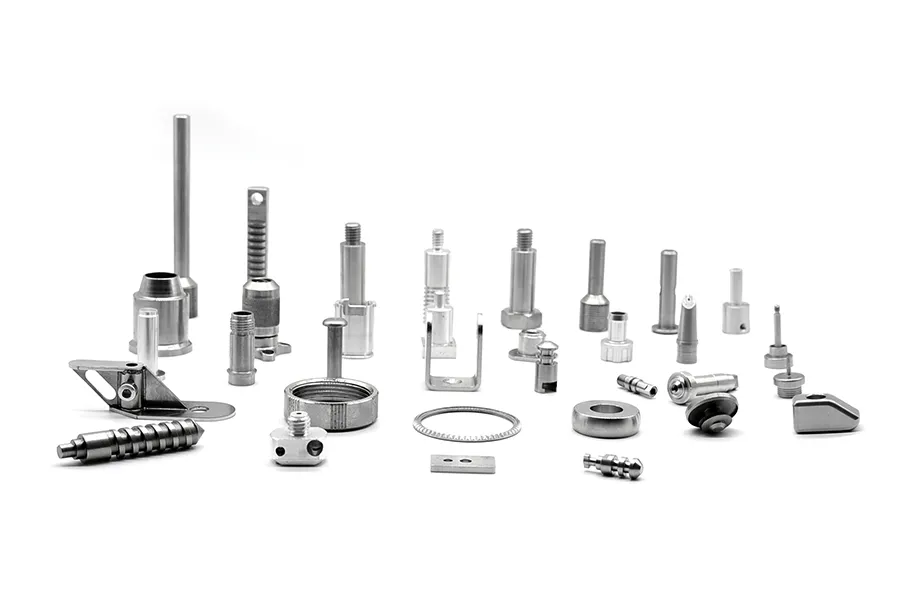CNC machining metal shaft
A CNC machining metal shaft is a precision-made cylindrical part produced using computer numerical control (CNC) machining technology. The shaft is typically made of metal and is designed to transmit rotational power and torque between different mechanical components. CNC machining allows for tight tolerances, complex geometries, and high accuracy in the production of shafts, making them suitable for use in various applications such as automotive, aerospace, industrial machinery, and medical equipment. The process involves cutting and shaping the metal using computer-controlled tools such as drills, lathes, and mills until the desired specifications are achieved.
CNC machining metal fittings
CNC machining metal fittings involves the use of computer-controlled machines to shape and cut raw metal into precise shapes and sizes. Metal fittings are commonly used in various industries to connect and join metal parts and components. CNC machining allows for high precision and accuracy in the production of metal fittings, resulting in parts that fit perfectly and work seamlessly together. The process involves using computer-aided design (CAD) software to create a digital model of the fitting, which is then translated into machine code to control the CNC machine. The machine uses specialized cutting tools to remove material from the raw metal to shape the final product. CNC machining is widely used in the production of metal fittings for various industries, including aerospace, automotive, construction, and more.
CNC machining metal gears
CNC machining metal gears is a common production process used in manufacturing industries. It involves using a CNC machine to cut, shape and drill metal gears to precise specifications.
The process begins with the creation of a digital CAD (Computer-Aided Design) model that represents the final design of the gear. The CAD model is then converted into a CNC program which is used to control the CNC machine.
During the machining process, the CNC machine uses cutting tools such as drills, mills, and lathes to remove metal material from the workpiece. The machine moves in a specific pattern following the instructions in the CNC program to create the intended shape and size of the gear.
Once the gear has been machined, it is inspected for any defects and passes through quality control checks to ensure it meets the required specifications.
CNC machining metal gears offers numerous advantages such as high accuracy, repeatability, and production efficiency. It is also able to produce gears with complex shapes and intricate designs that would be difficult or impossible to achieve using traditional manufacturing methods.
CNC turning metal flange nuts
CNC turning metal flange nuts are typically made using a lathe with computer numerical control (CNC) capabilities. The process involves using various cutting tools to remove material from a metal workpiece until it takes on the desired shape and size.
To make a flange nut, the lathe is programmed to turn a metal rod to the specifications of the required nut size. The cutting tool is then used to create threads on one end of the rod, which will eventually become the nut body. The flange is then created by cutting a wider section at the opposite end of the nut and shaping it to the desired dimensions and design.
CNC turning allows for precision manufacturing of flange nuts, with highly accurate dimensions and tolerances. This process is used to create a wide variety of flange nut designs to meet specific industrial or mechanical requirements.

